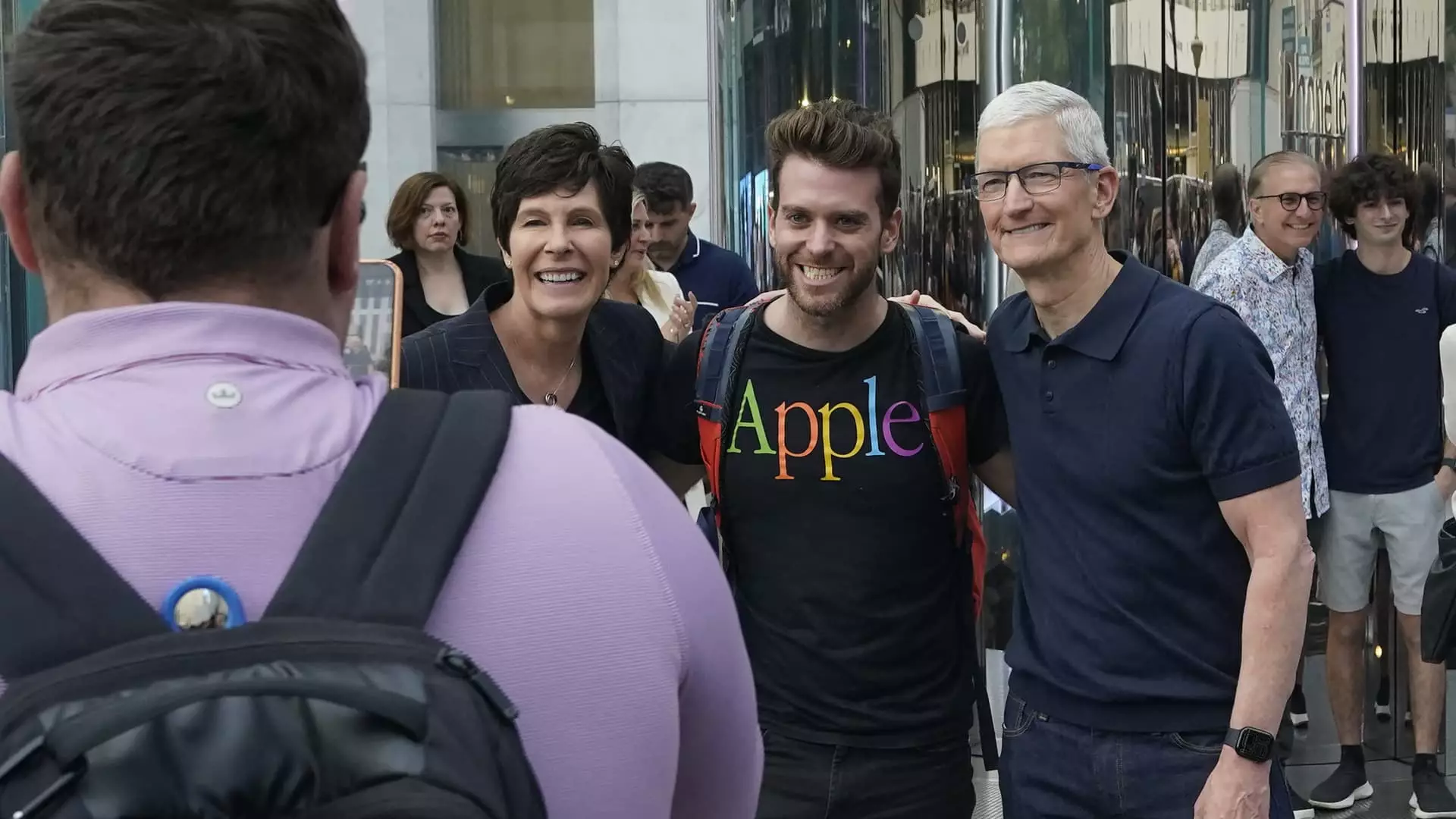In an electrifying atmosphere filled with eager consumers, Apple unveiled its highly-anticipated iPhone 16, Apple Watch Series 10, and AirPods 4 this past Friday. Following a spirited announcement event earlier this month and pre-order availability beginning on September 13, the products were finally within reach for fans and technophiles alike. However, while initial excitement was palpable, early signs reveal a compelling narrative of mixed responses that may shape the trajectory of Apple’s latest offerings.
The excitement surrounding Apple’s latest products was palpable, particularly showcased by the iconic glass cube structure at the Fifth Avenue store in New York City. Such elaborate gestures signify more than mere marketing; they illustrate Apple’s commitment to merging technology with immersive experiences. Among the key highlights is the enhanced Siri feature, designed to illuminate the iPhone’s screen edges—a symbolic nod to how far voice-activated AI has come and a clear indication of Apple’s strategic pivot towards artificial intelligence.
As iPhones evolve, so do the features they offer. The introduction of Apple Intelligence promises consumers transformative capabilities, allowing them to customize text, edit images from photographs, and engage with an evolved Siri experience. However, it’s critical to recognize that these features will be exclusive to the iPhone 16 and the previous year’s iPhone 15 Pro devices, limiting broader accessibility among Apple customers.
Despite the innovative allure, a darker sentiment looms over Apple with reports indicating that initial demand for the new iPhone is considerably lower than anticipated. Analysts from various financial institutions, including TF Securities, reported that first-weekend sales figures lagged approximately 12% year-over-year compared to the iPhone 15. This data presents a stark juxtaposition to the anticipation built leading up to the launch and casts a shadow on the company’s traditional sales vigor.
Further complicating this picture, shipping timelines revealed by major financial firms like Barclays and JPMorgan hinted that the high-end iPhone Pro models may not see the same enthusiastic adoption as previous launches. Such indicators speak volumes when considering consumer behavior and preferences in a constantly evolving tech landscape.
Even amidst these fluctuating sales numbers, Apple CEO Tim Cook maintained a measured perspective. During a media interaction outside the Fifth Avenue store, Cook emphasized the premature nature of sales analyses only hours after launch, suggesting that concrete conclusions should not be hastily drawn. Such responses reflect not only the optimism inherent in Apple’s culture but also an acknowledgment of the need for patience to evaluate consumer reception.
A notable voice in the conversation comes from UBS analysts, who caution against overreacting to lower initial sales. They advised that variations in data collection—especially compared to the previous year’s disruptions in supply chains—could provide a skewed perspective on demand. For instance, the 41-day wait period for iPhone 15 Pro Max pre-orders last year drastically contrasts with the 26-day average for the iPhone 16 Pro Max this year. These insights prompt a nuanced consideration of what “lower demand” truly signifies in the context of seasonal fluctuations and market conditions.
Moreover, the analysts pointed out that this year’s product lineup lacks a “killer app”—a standout feature that energizes consumer interest and drives sales. The comparison between this year’s introduction of Apple Intelligence and last year’s compelling advancements serves to underline how consumer expectations continue to rise alongside the company’s iterative product improvements.
Apple’s newer additions go beyond just smartphones. The Apple Watch Series 10 aims to push the boundaries of health technology, offering enhanced features like Sleep Apnea detection. Meanwhile, the AirPods 4 present an updated design with a compact charging case and advanced noise cancellation. Each of these devices reflects Apple’s ongoing evolution within the wearables market, yet they too leave unanswered questions about consumer traction amid changing preferences.
While the introduction of the iPhone 16, Apple Watch Series 10, and AirPods 4 marks a significant step in Apple’s technological journey, the lukewarm sales figures cannot be overlooked. As analysts sift through various indicators, one fundamental question remains: Is Apple’s longstanding reputation for innovation enough to sustain consumer enthusiasm and drive market performance in the face of a shifting landscape? The answer may reveal itself as the impacts of this launch continue to unfold in the weeks ahead.


Leave a Reply